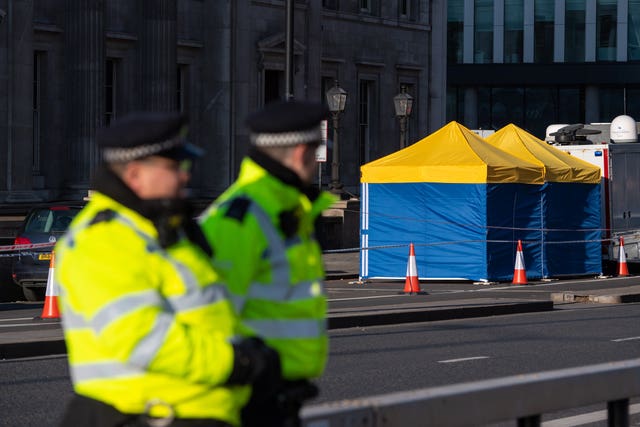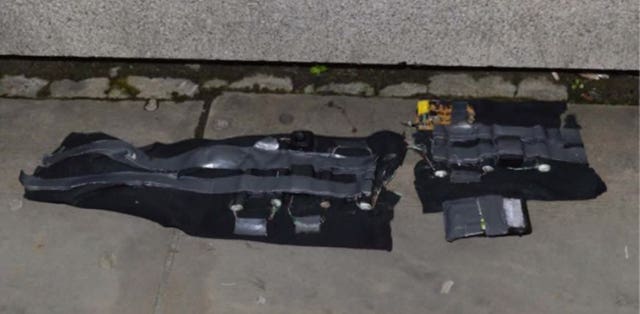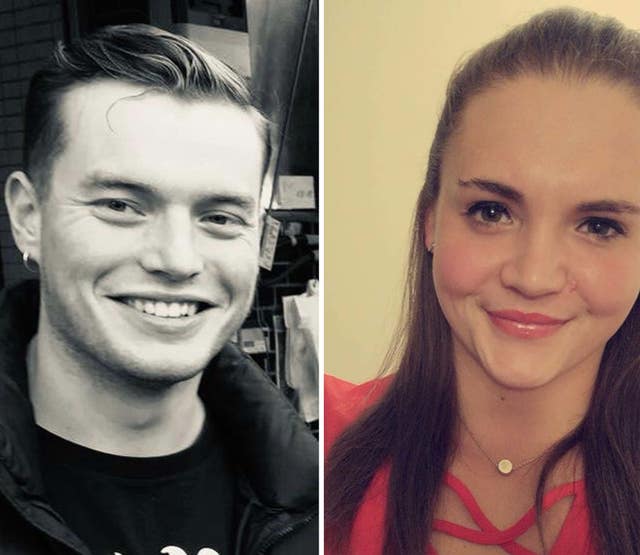Firearms officers “lawfully killed” terrorist Usman Khan on London Bridge after he stabbed two Cambridge university graduates because they believed he was trying to detonate a suicide belt, an inquest jury has concluded.
The 28-year-old homegrown jihadi was finally gunned down by armed officers outside Fishmongers’ Hall after Khan strapped kitchen knives to his hands and attacked delegates at a prisoner education event in November 2019.
Khan was also apparently strapped with explosives, which was later found to be a fake suicide belt.
Before armed officers arrived, other attendees at the event tried to incapacitate Khan – striking him with a chair, a fire extinguisher and even a narwhal tusk grabbed from the walls of Fishmongers’ Hall.
The inquest heard six police officers from the Met and City of London fired 20 times at Khan, including 18 in a 90-second period after being sanctioned to carry out a so-called “critical shot” amid fears he was about to detonate his explosive device resulting in mass casualties.
Jurors concluded on Thursday that Khan had been lawfully killed by anonymous police officers following a two-week inquest at the City of London’s Guildhall, half a mile from where he died.
The coroner, Mark Lucraft QC, instructed the jury to return a short form conclusion of lawful killing on the grounds officers thought Khan had a viable device.
The jury confirmed Khan had been lawfully killed and, in a longer, narrative conclusion, they said the first two shots fired at Khan had been “to incapacitate him” and “reduce the risk to the public still in the area”.

Khan continued to move for eight minutes after first shots, apparently trying to remove his coat and a glove before sitting bolt upright and staring at police, who responded with a further 18 bullets.
The jury said: “Between 14:03 and 14:10:27 Khan continued to move while police continued to clear the surrounding area and shouted at Khan to stay still.
“The police believed Khan was trying to find a trigger.
“At 14:10:27 Khan sat up which was interpreted by the police as a move to detonate the device. As a result of this, officers decided to take multiple critical shots to neutralise this risk.
“These critical shots were supported by senior officers in the command centre. From 14:12:06 there was no discernible movement from Khan.”

Following the verdict, Met Police Assistant Commissioner Neil Basu said the actions of officers on the day were “nothing short of heroic” and said their speed and professionalism “undoubtedly saved lives”.
He added: “Every officer – both armed and unarmed – who responded that day, as well as the members of the public who confronted the attacker, showed bravery and courage that was quite extraordinary.”
Police called to the scene told jurors they feared Khan would detonate his device – later found to be a hoax fashioned from items including an Xbox, cling film and Gorilla Glue – at any moment.
One officer, known only as WS5, said he feared the worst when he saw Khan was wearing a suicide belt.
He said: “When I was in his face, in his personal space, I remember him shouting ‘Allahu Akbar’ (meaning ‘God is great’) at me.
“At that point I thought, ‘That’s it, I’m not going home to see my family or my friends either’.”

Another officer known to the inquest as YX99 recalled being “stunned” when Khan looked at him and said: “I’ve got a bomb.”
Another, AZ99, described the “quite surreal” moment Khan was apparently shot to the forehead.
He said: “He (Khan) put his hand towards his head, he pulled his hand away to look for blood.
“All I could think was: Why aren’t you dead?”
Khan was pronounced dead at 3.07pm.

Forensic pathologist Dr Ashley Fegan-Earl found Khan had not in fact been shot to the forehead but diagonally through the nose, with the bullet gauging a deep wound into his cheek.
Dr Fegan-Earl said 12 out of the 20 shots fired hit Khan but just three – those which struck his thoracic aorta, kidneys and left lung – would have caused the haemorrhaging that killed him.
The pathologist said a combination of an increased heart rate and adrenalin would have allowed Khan to keep moving for so long.
Khan had been free to strike at Fishmongers’ Hall following his release from prison on Christmas Eve 2018, having served eight years in jail for plotting a terror training camp in his parents’ homeland of Pakistan.
He was initially handed an indeterminate prison term.
But Khan won an appeal to vary the sentence, meaning he was released having served half his 16-year jail term – significantly, police said, without having to satisfy the Parole Board first.

Khan first fatally stabbed Jack Merritt, 25, a Learning Together course co-ordinator he had worked with, shortly before 2pm in the downstairs toilets, before then attacking his colleague Saskia Jones, 23.
Police said Khan acted alone.
Last month a separate inquest jury identified a catalogue of failures and omissions had contributed to the deaths of Mr Merritt and Ms Jones.




Comments: Our rules
We want our comments to be a lively and valuable part of our community - a place where readers can debate and engage with the most important local issues. The ability to comment on our stories is a privilege, not a right, however, and that privilege may be withdrawn if it is abused or misused.
Please report any comments that break our rules.
Read the rules here